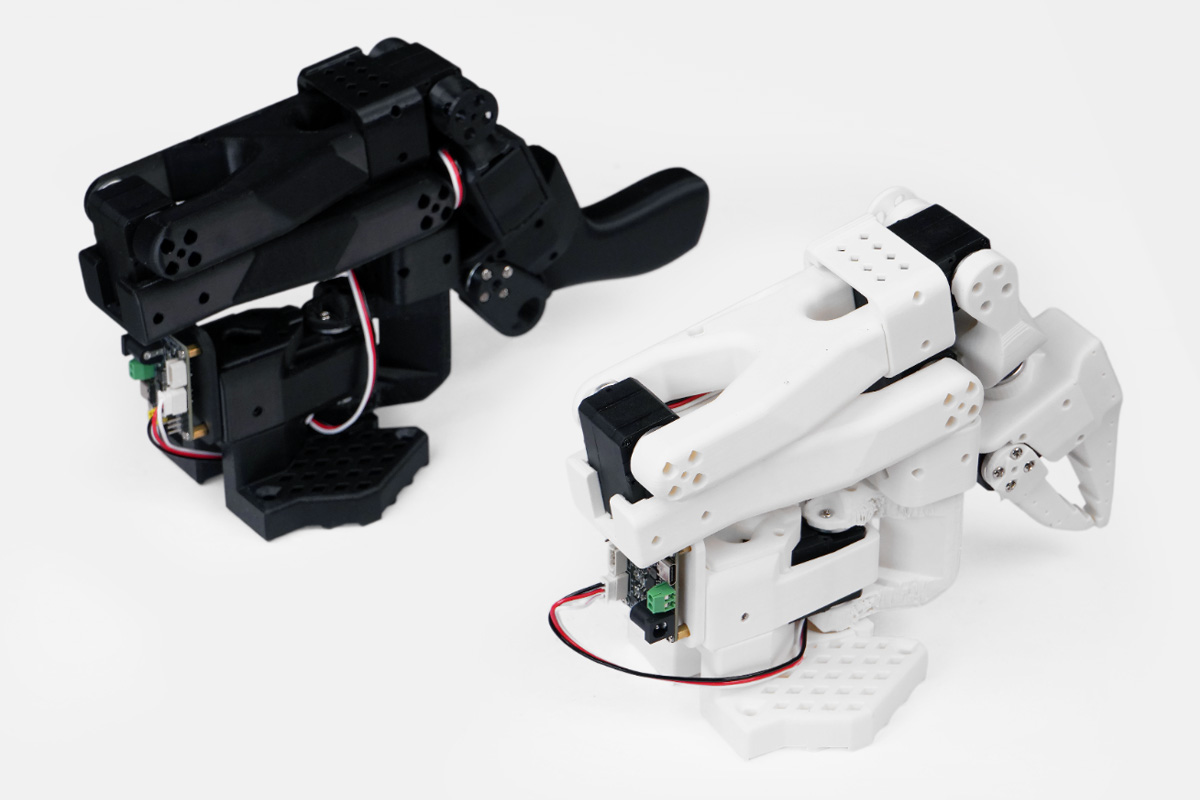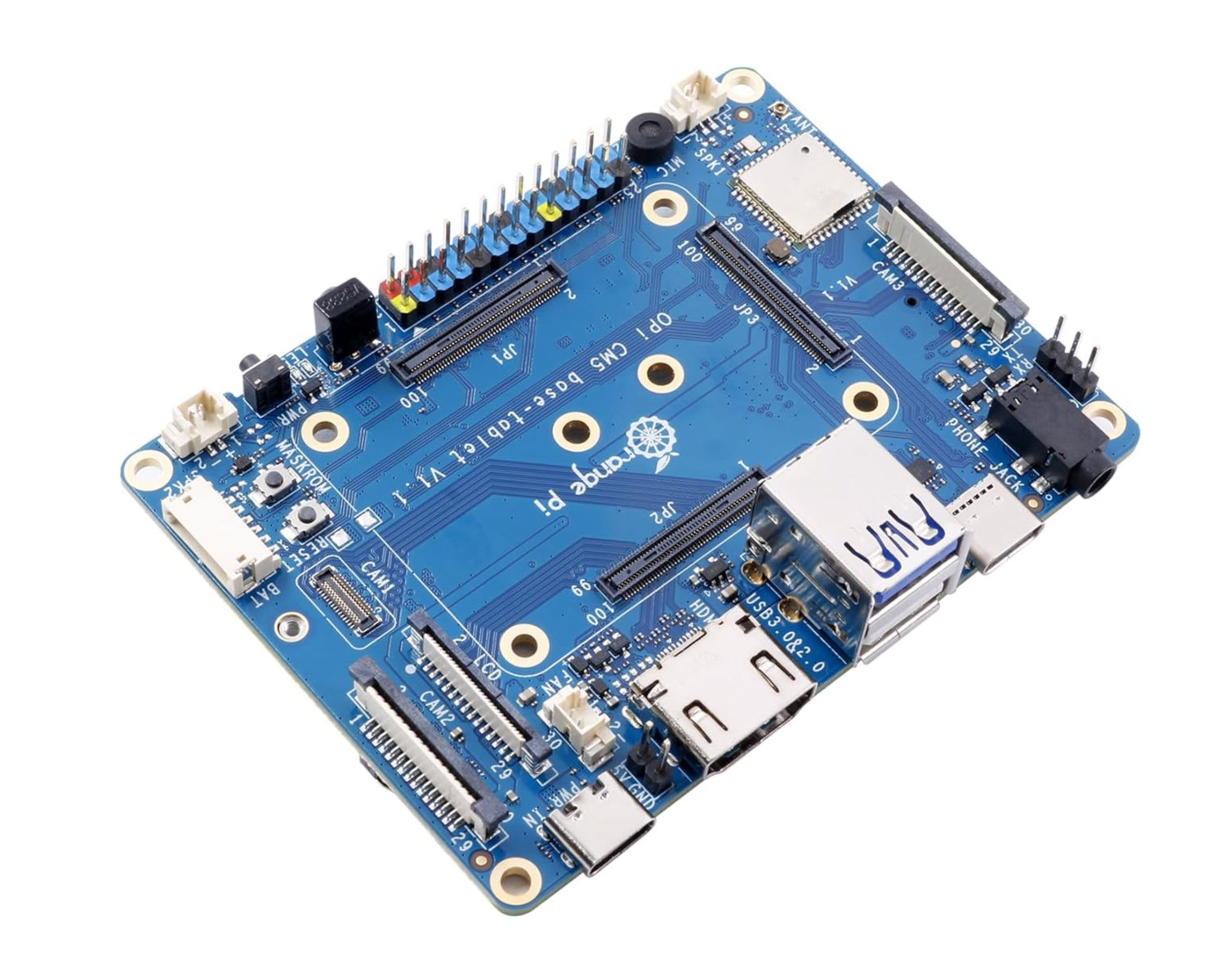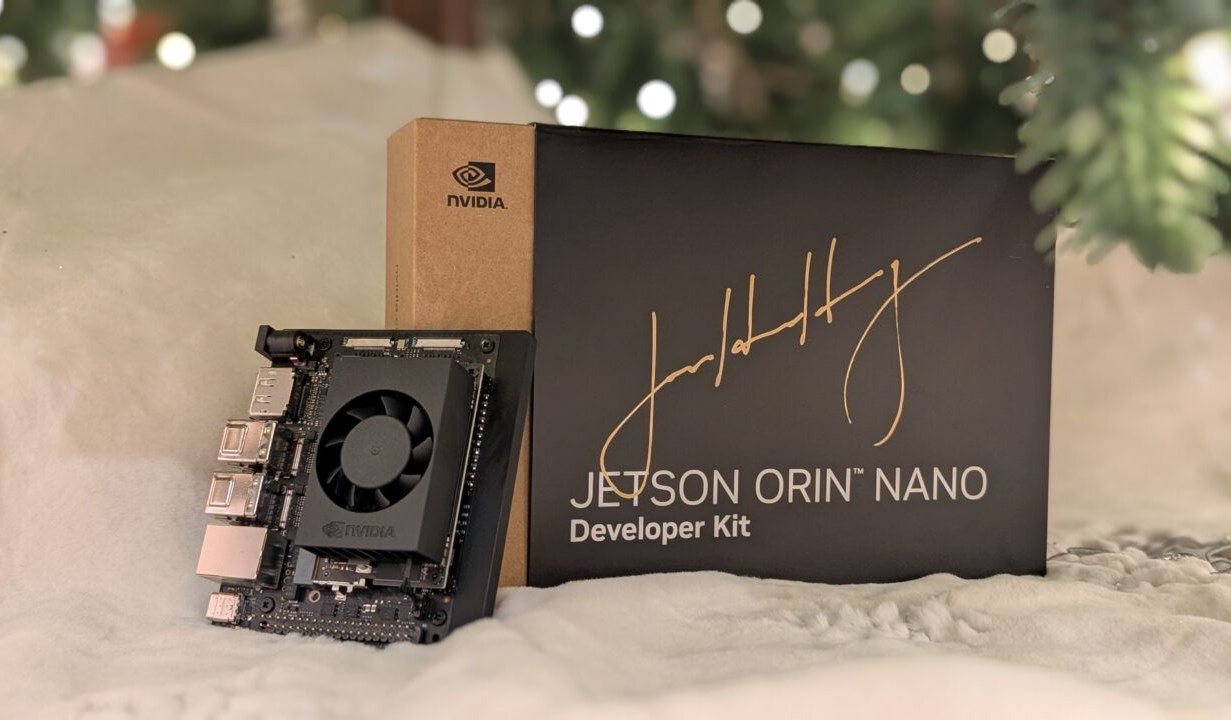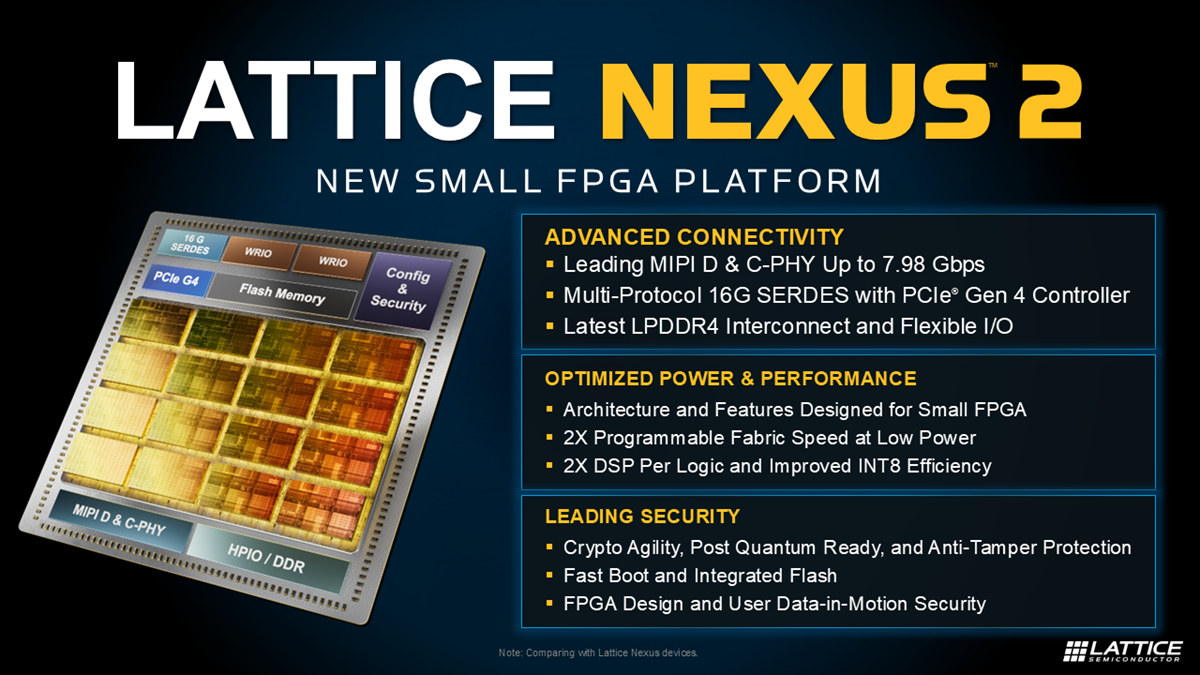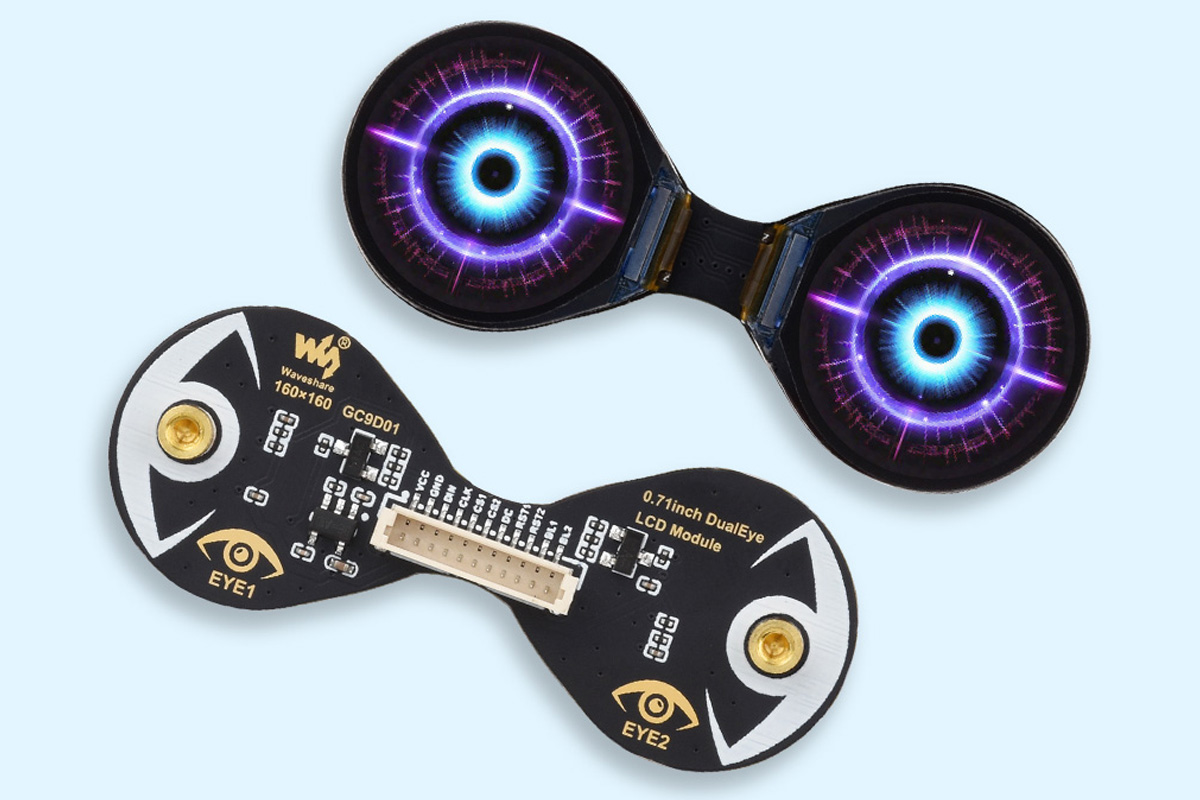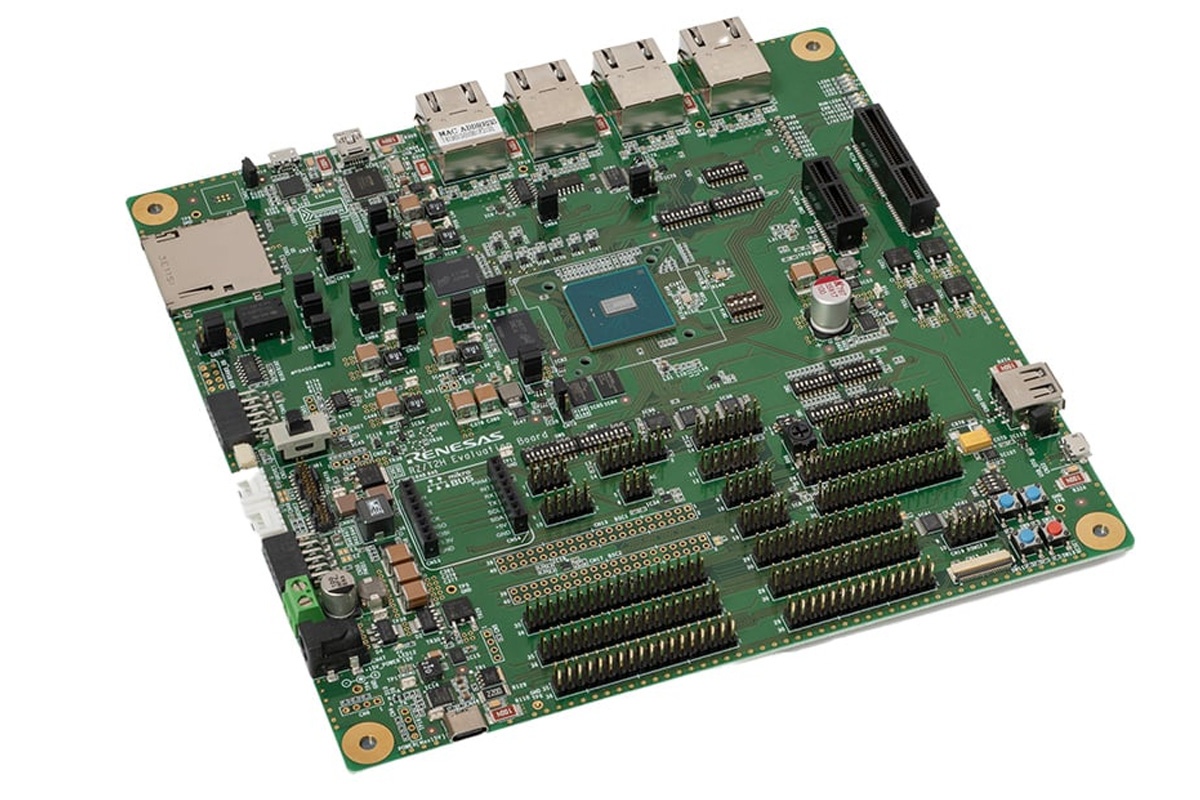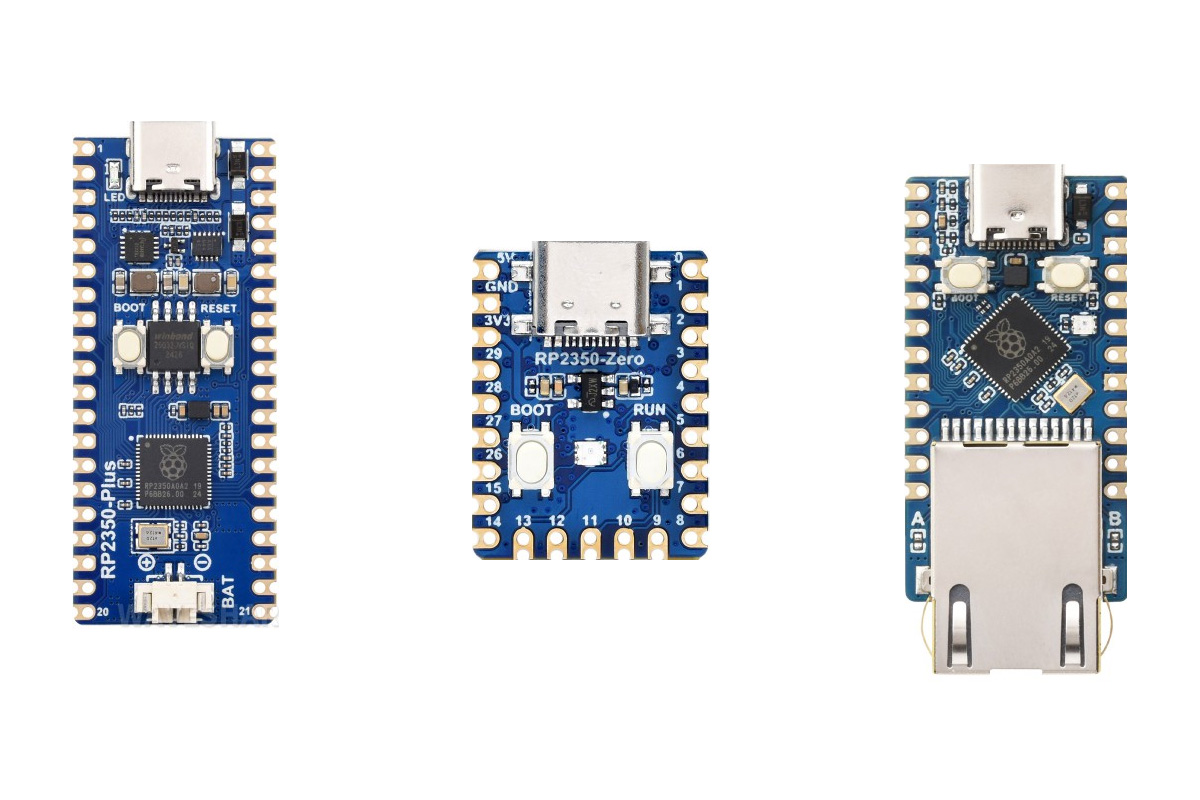Seeed Studio has recently started selling the SO-ARM100 AI Robotic Arm kit, a low-cost AI arm designed for real-world robotics applications. This open-source hardware device features a 6-degree-of-freedom design with high-torque STS3215 bus servos, a 12-bit magnetic encoder for precise angle sensing, and UART for communication. The arm comes with motors, driver boards, power adapters, and other 3D-printed parts like arm segments, base, grippers, and motor mounts. Designed to work with the NVIDIA Jetson edge platform, it is ideal for grasping and placing. All these features make this device suitable for education, research, and AI-driven robotics projects. SO-ARM100 AI robotic arm kit specifications Degrees of Freedom (DOF) – 6 Motor control Total servo – 12x STS3215 bus servos Servo torque Arm kit Standard – 19.5 kg.cm @ 7.4V Arm kit pro – 30 kg.cm @ 12V (Pro) Angle Sensor – 12-bit magnetic encoder USB – USB-C for programming and testing […]
Orange Pi CM5 “Tablet” Base Board drops Ethernet for WiFi 5, adds battery support, M.2 socket, 26-pin GPIO header…
The Orange Pi CM5 was launched as an alternative to Raspberry Pi CM4/CM5 last July with a Rockchip RK3588S octa-core Cortex-A76/A55 SoC, up to 16GB LPDDR4x, 256GB eMMC flash, and three board-to-board connectors maintaining partially compatibility with the Raspberry Pi Compute Module 4. At the time, Orange Pi also introduced the Orange Pi CM5 Base Board with HDMI 2.1, one Gigabit Ethernet port, two 2.5GbE ports, USB 3.0/2.0 ports, four camera connectors, and more. The company has now launched the Orange Pi CM5 “Tablet” Base Board without Ethernet ports, making use of WiFi 5 and Bluetooth 5.0 for networking instead. It keeps many of the same features but adds a 26-pin GPIO header, an M.2 Key-M socket for SSD storage, DP 1.4 and MIPI DSI display interfaces, and various audio interfaces. However, it does with “only” three camera interfaces. It’s quite thick to be used in a typical tablet, but […]
$249 NVIDIA Jetson Orin Nano Super Developer Kit targets generative AI applications at the edge
NVIDIA Jetson Orin Nano Super Developer Kit is an upgrade to the Jetson Orin Nano Developer Kit with 1.7 times more generative AI performance, a 70% increase in performance to 67 INT8 TOPS, and about half the price, making it a great development platform for generative AI at the edge, mostly robotics. We’ve seen several AI boxes and boards in the last year capable of offline generative AI applications like the Firefly AIO-1684XQ motherboard or Radxa Fogwise Airbox which I reviewed with Llama3, Stable diffusion, Imgsearch, etc… A product like the Fogwise Airbox delivers up to 32 TOPS (INT8) and sells for around $330 which was very competitive then (June 2024). However, the Jetson Orin Nano Super Developer Kit will certainly disrupt the market with over twice the performance, a lower price, and a larger developer community. NVIDIA Jetson Orin Nano Super specifications: NVIDIA Jetson Orin Nano 8GB Module CPU […]
Lattice unveils Nexus 2 small FPGA platform, Lattice Avant 30 and Avant 50 mid-range devices, updated Lattice design software tools
Lattice Semiconductors announced several new FPGAs and software tools at the Lattice Developers Conference 2024 which took place on December 10-11. First, the company unveiled the Nexus 2 small FPGA platform starting with the Certus-N2 general-purpose FPGAs offering significant efficiency and performance improvements in this category of devices. The Lattice Avant 30 and Avant 50 were also introduced as mid-range FPGA devices with new capacity options to enable edge-optimized and advanced connectivity applications. Finally, the company releases new versions of Lattice design software tools and application-specific solution stacks to help accelerate customer time-to-market such for edge AI, embedded vision, factory automation, and automotive designs with Lattice Drive. Let’s have a look at the highlights of each announcement. Lattice Nexus 2 small FPGA platform and Certus-N2 FPGA Highlights and benefits of the Lattice Nexus 2 small FPGA platform: Power Efficiency against similar class competitive devices Up to 3x lower power Up […]
Waveshare Double Eye LCD module is a high-tech alternative to googly eyes
Waveshare has recently launched the Double Eye LCD module (also known as the 0.71inch DualEye LCD module), a high-tech alternative to googly eyes, with two 0.71-inch round IPS displays with 160×160 pixels of resolution and 65K color depth. It uses the GC9D01 driver and communicates via an SPI interface. The module operates at a 3.3V or 5V and is designed so that both ESP32 and Arduino boards can drive it. These features make this device useful for applications like wearables, robotics, IoT devices, etc… Waveshare Double Eye LCD module specifications: Display Type – Dual 0.71-inch round LCD displays Resolution – 160×160 pixels Panel – IPS (wide viewing angle) Colors – 65K colors Pixel Pitch – 37.5 × 112.5 µm Controller and Driver Driver – GC9D01 Interface – SPI Operating Voltage – 3.3V / 5V Dimensions Display – 18 mm ∅ per round LCD Module – 51 x 20 mm The […]
Renesas RZ/T2H Cortex-A55/R52 industrial MPU and Dev Board support EtherCAT, PROFINET, and TSN
Renesas RZ/T2H industrial MPU is the most powerful member of its RZ/T2 series of real-time microprocessors. The MPU features four Arm Cortex-A55 CPUs for application tasks and two Cortex-R52 CPUs for real-time control. It supports 9-axis motor control with 3-phase PWM timers, delta-sigma interfaces, and encoder interfaces. It also supports Industrial Ethernet protocols like EtherCAT, PROFINET, and TSN. These features make it ideal for industrial applications such as industrial robots, PLCs, motion controllers, and CNC machines. Renesas launched the RZ/T2L single-core Arm Cortex-R52 MPU just last year, and before that, in 2022, they launched the RZ/T2M dual Arm Cortex-R52 MPU. The RZ/T2L was just a cost-down version of RZ/T2M with an EtherCAT controller, compared to those old controllers the latest RZ/T2H supports 9-axis motor control and compatibility with various industrial Ethernet protocols. Renesas RZ/T2H specifications: CPU 4x Arm Cortex-A55 (64-bit) clocked at up to 1.2GHz with 32KB L1 I/D cache, 1MB L3 cache 2x […]
Waveshare launches three RP2350 USB-C development boards with castellated design, battery support, built-in Ethernet port
Waveshare has announced four new USB-C and USB-A development boards based on the Raspberry Pi RP2350 MCU: the Waveshare RP2350-Plus dev board, the Waveshare RP2350-Zero Mini dev board, the Waveshare RP2350-ETH Mini dev board, and the Waveshare RP2350-GEEK USB dev board. The RP2350-Plus is a low-cost, high-performance Pico-like development board with the RP2350 MCU, various I/O, battery support, USB Type-C, and compatibility with Raspberry Pi Pico modules. The RP2350-Zero Mini is another compact dev board with castellated pins, 29 GPIOs, USB Type-C, PIO, and versatile peripheral support, ideal for IoT, robotics, and embedded systems. The RP2350-ETH Mini dev board has Ethernet support and various GPIO functionalities, making it ideal for IoT development. Like any other RP2350 board, the Waveshare RP2350 boards support C/C++ and MicroPython SDKs with drag-and-drop firmware flashing via USB mass storage. Waveshare RP2350-Plus development board The Waveshare RP2350-Plus is a low-cost development board that comes in a […]
LILYGO T-Bao tiny AI robot combines ESP32 and Kendryte K210 RISC-V chip, features camera and display
The T-Bao AI robot is a compact embedded device/robot that combines an ESP32 and a K210 RISC-V microcontroller and can perform face recognition and robotics applications. This compact device features a 1.54-inch 240×240 capacitive touch screen, a 2MP OV2640 camera, a MAX98357A I2S audio amplifier, a DRV8833 motor driver, an MPU6050 6-axis motion sensor, and an AXP202 PMU for power management. Additionally, it supports USB charging, offers LEGO blocks compatibility, and can move around with integrated caster wheels. These features make it usable for educational projects, robotics, IoT applications, and embedded systems prototyping. LILYGO T-Bao specifications SoCs Kendryte K210 dual-core 64-bit RISC-V processor @ 400 MHz with 8MB on-chip RAM, various low-power AI accelerators delivering up to 0.5 TOPS ESP32-D0WDQ6-V3 dual-core Xtensa LX6 processor, 240 MHz, 16MB Flash, 8MB PSRAM Display – 1.54-inch capacitive touch LCD (240×240) Camera – 2MP OV2640 with rolling shutter, UXGA (1600 x 1200) resolution, 180-degree […]


